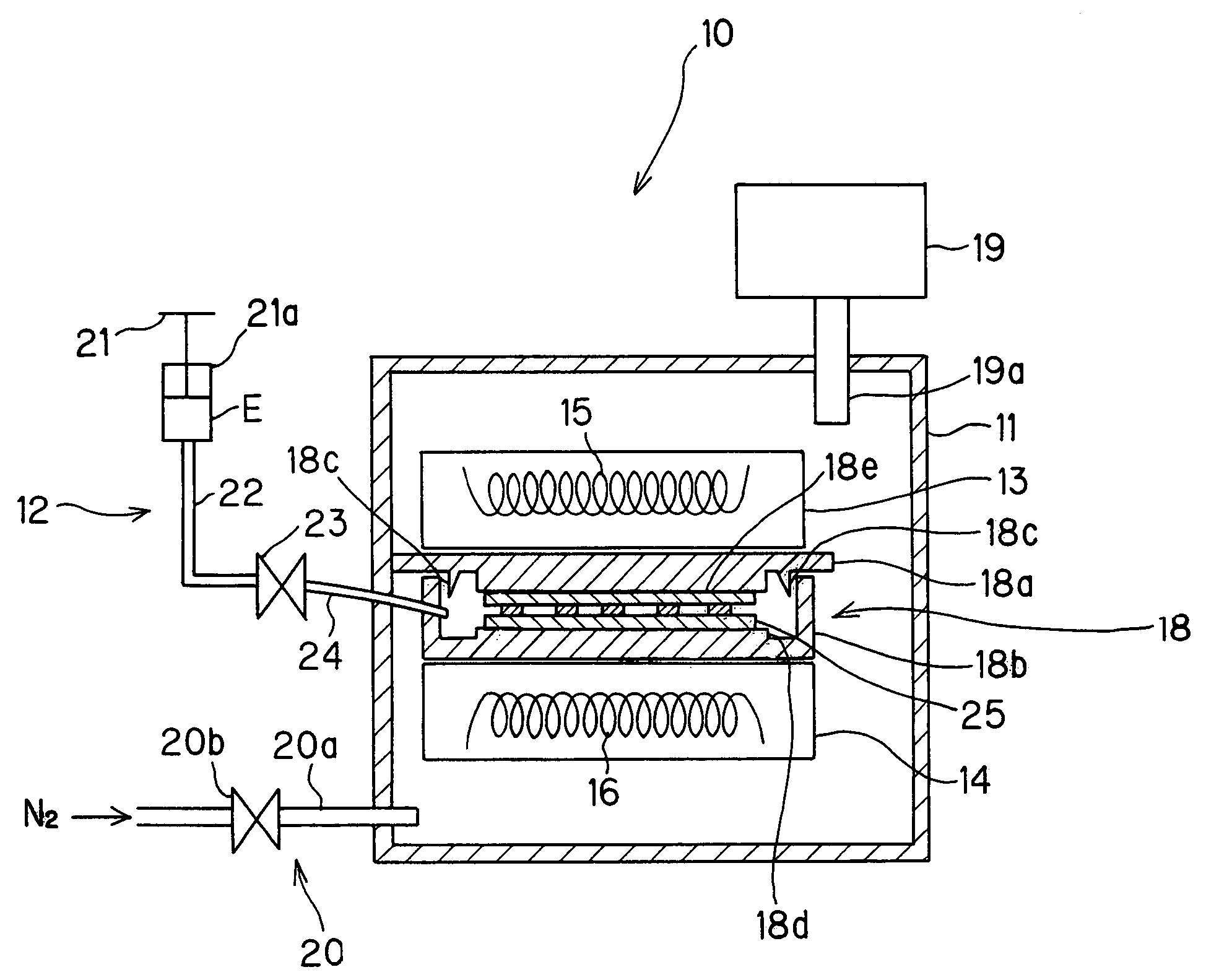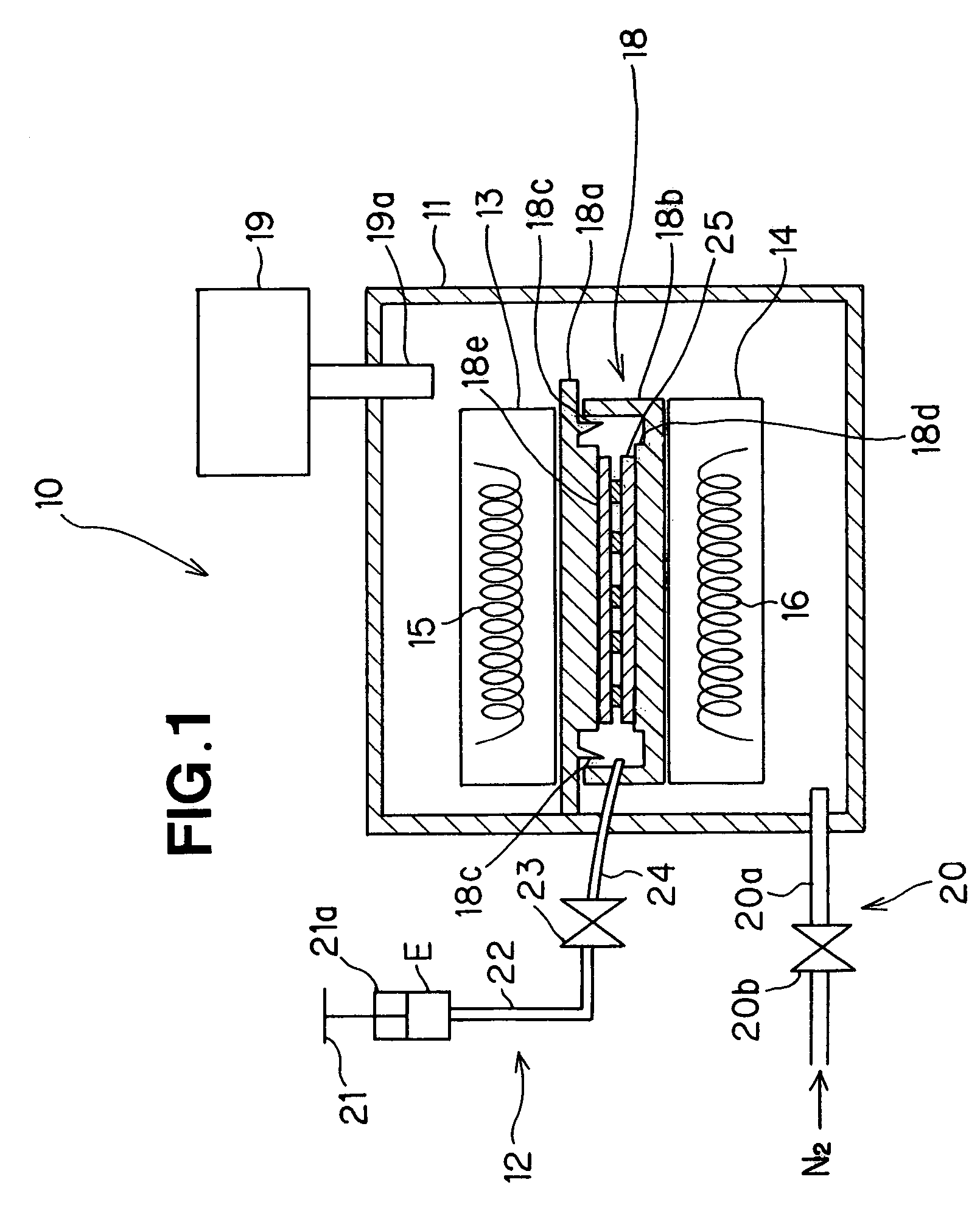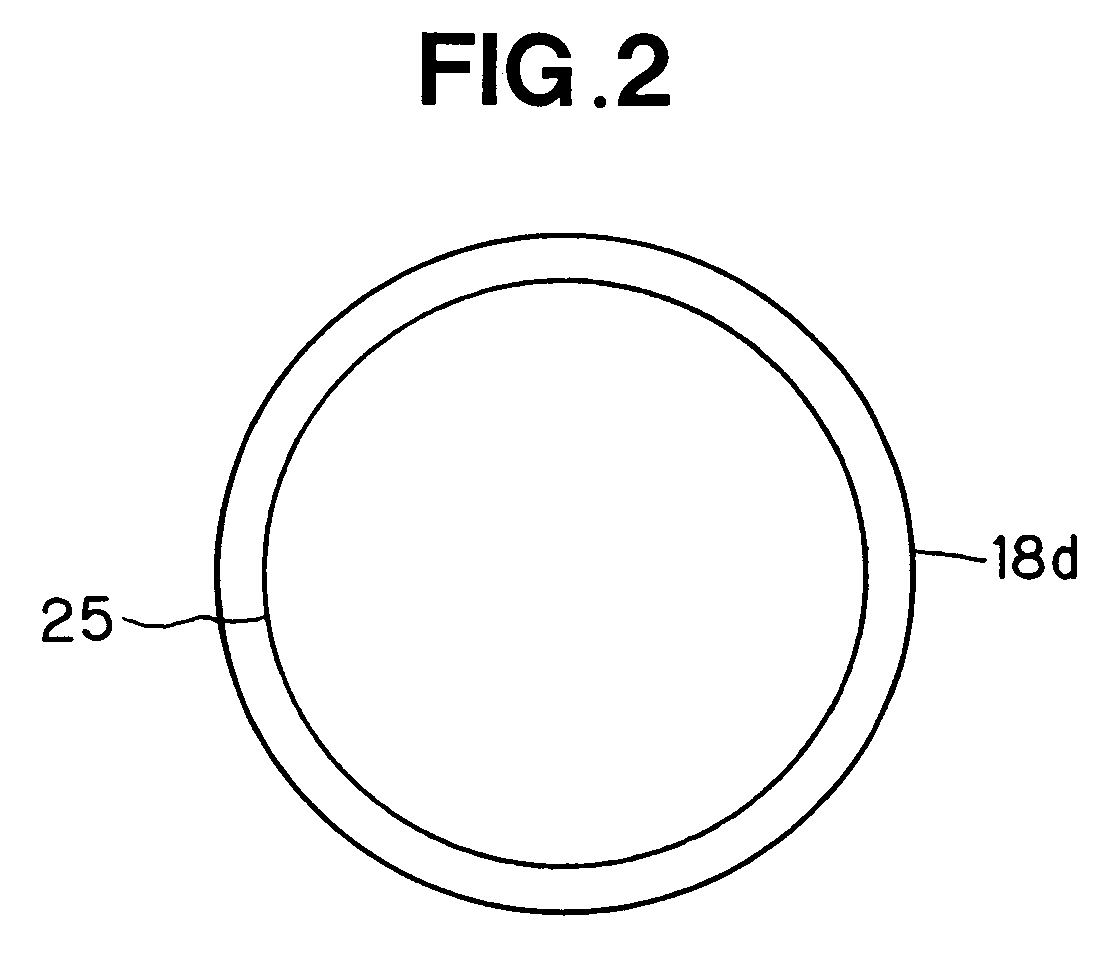Adhesive injection apparatus
a technology of adhesive injection and injection apparatus, which is applied in the direction of application, manufacturing tools, drawing profiling tools, etc., can solve the problems of increasing wasting the peripheral edge portion of the stacked wafer located above and below the sealing section, and the inability to inject adhesive, so as to reduce the time of the adhesive injection step, avoid the increase of the number of necessary processing steps, and reduce the overall traveling distance of the adhesiv
- Summary
- Abstract
- Description
- Claims
- Application Information
AI Technical Summary
Benefits of technology
Problems solved by technology
Method used
Image
Examples
Embodiment Construction
[0020]FIG. 1 is a sectional view of an adhesive injection apparatus in accordance with an embodiment of the present invention. The adhesive injection apparatus 10 includes: a vacuum chamber 11; an adhesive supply section 12; a receptacle 18 having upper and lower stages (fixing sections) 13 and 14, heating devices 15 and 16 and upper and lower jigs 18a and 18b; a pump or evacuation device 19; and an inert gas introduction section 20.
[0021]The adhesive supply section 12, which is a device for supplying an adhesive E in the form of liquid into the receptacle 18, includes a piston portion 21, supplying path 22, valve 23 and adhesive injecting portion 24. The adhesive E may be an epoxy-based adhesive, for example. The receptacle 18, including the upper and lower jigs 18a and 18b, is provided for receiving and loading (i.e., holding) therein a plurality of layers of stacked flat plate members 25, such as a plurality of layers of stacked wafers (collectively called “wafer stack”) 25 in a ...
PUM
| Property | Measurement | Unit |
|---|---|---|
| pressure | aaaaa | aaaaa |
| temperature | aaaaa | aaaaa |
| surface area | aaaaa | aaaaa |
Abstract
Description
Claims
Application Information
 Login to View More
Login to View More - R&D
- Intellectual Property
- Life Sciences
- Materials
- Tech Scout
- Unparalleled Data Quality
- Higher Quality Content
- 60% Fewer Hallucinations
Browse by: Latest US Patents, China's latest patents, Technical Efficacy Thesaurus, Application Domain, Technology Topic, Popular Technical Reports.
© 2025 PatSnap. All rights reserved.Legal|Privacy policy|Modern Slavery Act Transparency Statement|Sitemap|About US| Contact US: help@patsnap.com



